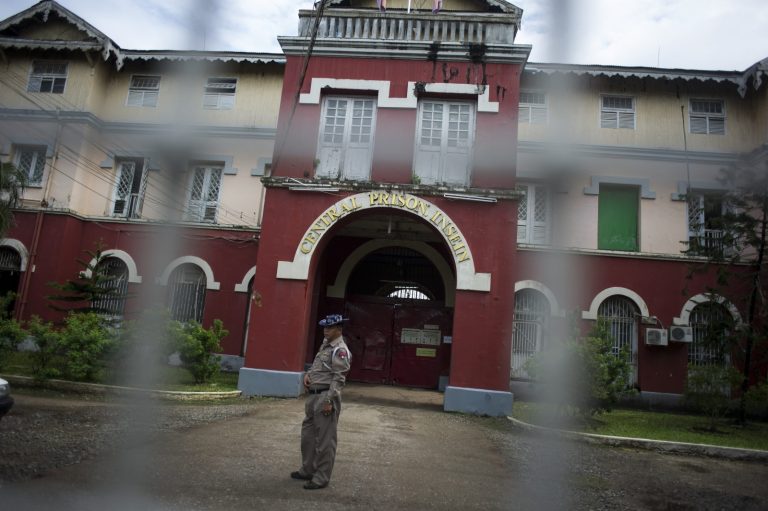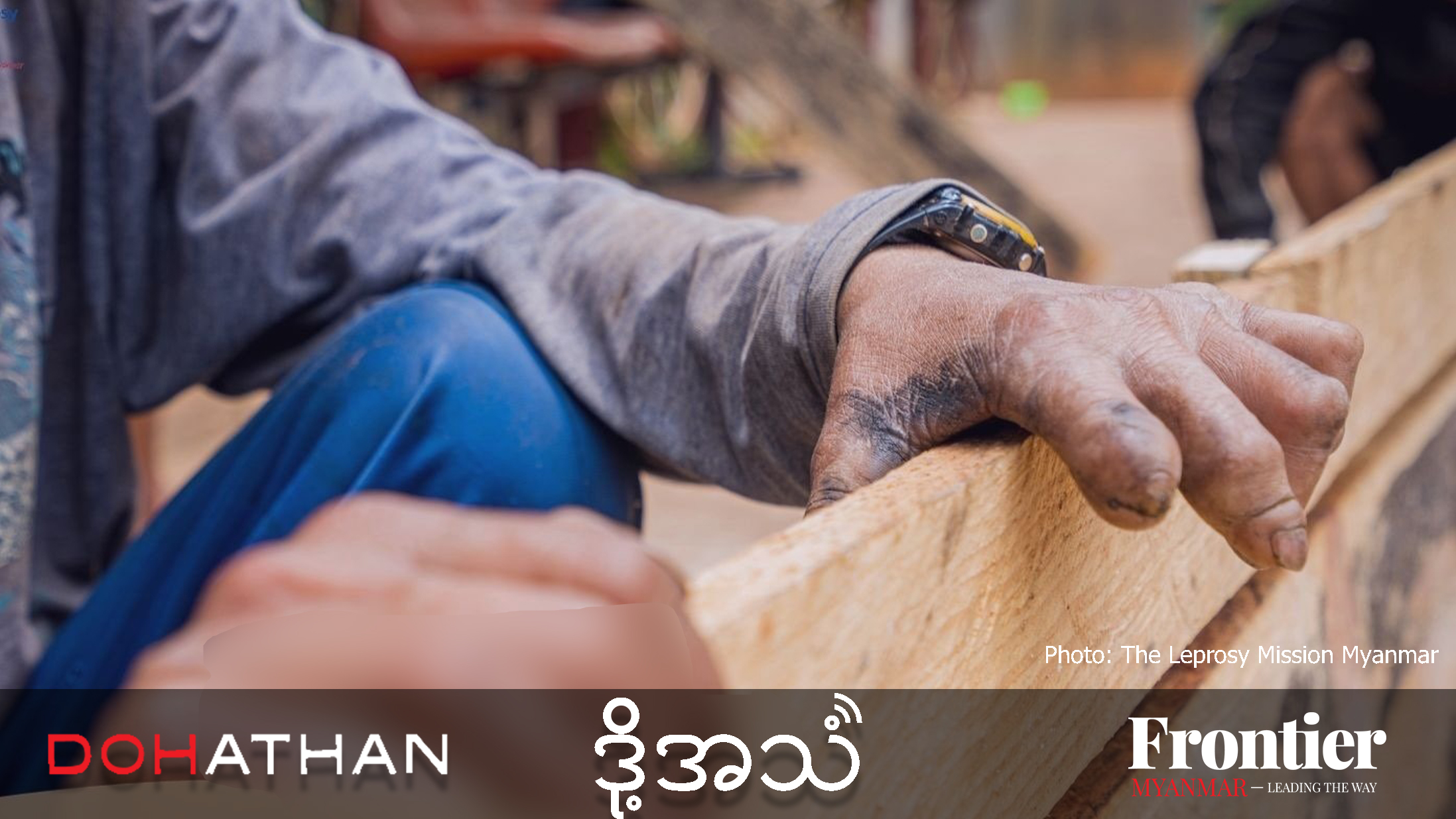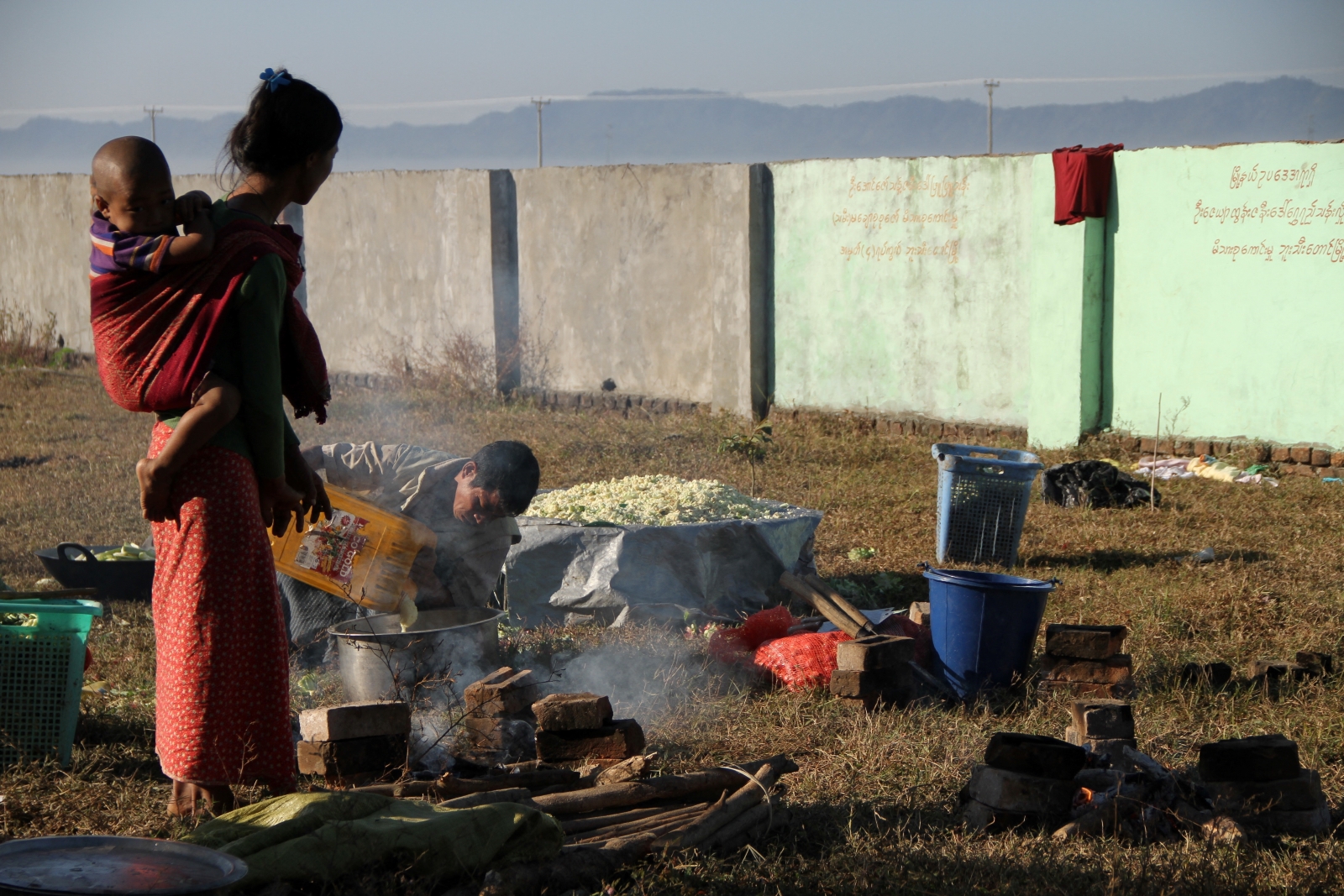People returning to their villages after a January ceasefire are struggling to access healthcare, with public hospitals left empty and the Myanmar military blocking medical deliveries, while some volunteers try to fill the gap.
By ANT PWEH AUNG | FRONTIER
Myanmar social media users welcomed Operation 1027 with pictures of themselves holding Eugenia flowers. Called thabyay in Burmese, the flowers are a centuries-old symbol of victory. The surprise assault, launched by the Three Brotherhood Alliance of ethnic armed groups in late October, routed the military across large areas of northern Shan State and sent shockwaves through the military and its support base.
But while the operation rekindled hope among the wider public for an end to military rule, it hasn’t been a victimless triumph. Tens of thousands of civilians in northern Shan have been displaced, while many more have had to endure shortages of basic goods and price rises. The shortages are due to the blockage or destruction of roads and bridges as well as restrictions imposed by the military junta, which have persisted even after a ceasefire was agreed in early January.
One of the biggest difficulties, though, is a vacuum in healthcare. Reasons for this, sources on the ground told Frontier, include the shuttering of already meagre junta-run health services in conquered areas and the Brotherhood’s so-far limited ability to fill the gap, despite help from some volunteer groups. At the same time, the junta is blocking medicine and aid convoys to Brotherhood-held towns and villages, while failing to maintain supplies to areas still under its control.
One of these areas, the northern Shan hub city of Lashio, is an established base for humanitarian operations. However, Ko Nyein Chan* an employee at an international non-government organisation, the name of which he asked be withheld, said their aid response had largely been limited to the rural borders of Lashio Township – far from the areas of the greatest displacement. Like many other international NGOs, his organisation relies on the United Nations Office for the Coordination of Humanitarian Affairs to negotiate with the junta for access to communities in need, but the regime has largely denied them permission to travel to other townships.
These aid groups also tend to lack direct channels to ethnic armed groups, who now administer much of the target population. Nyein Chan said that, before Operation 1027 redrew the administrative map of northern Shan, the aid groups used to depend on local officials from the General Administration Department to liaise with the ethnic armed groups, who were then largely confined to rural areas. But when these groups seized more than a dozen towns, the resident officials fled, leaving the NGOs and UN agencies without a liaison.
“To deliver medicines and healthcare for displaced people in war-affected areas, we need to negotiate with ethnic armed organisations, but they [the UN] can’t find the channels to do it,” Nyein Chan said. “Many organisations don’t want to take risks.”
Local, often ethnic-based, organisations are more able to bypass the restrictions, even when channelling assistance from more flexible foreign donor groups. But a representative of one of these local groups, the Ta’ang Health Organisation, said it is now harder getting supplies past regime checkpoints.
A spokesperson for the organisation, who asked not to be named, said they could formerly transport medicine from Lashio using public buses or private vehicles, but neither was a reliable option anymore. She added that its clinic in Kutkai, a town seized by Brotherhood member the Ta’ang National Liberation Army, remains closed due to insecurity, making it even harder to serve the conflict-hit population. The organisation also had to shutter a clinic in rural Lashio Township, although it maintains three outlets in Mantong and two in Tangyan Township.

“Since Operation 1027, NGOs and many other organisations can’t enter war-affected areas at all,” she said. “The healthcare situation in those places could get very bad.”
Gaining access would help to fill the gap left by state healthcare workers, who fled the Brotherhood’s advance and left public hospitals and clinics empty, according to sources in Kutkai, Namhsan and Hseni townships. State services were already inadequate, due to decades of neglect under military rule and the participation of many public health staff in the Civil Disobedience Movement, a general strike against the 2021 military coup.
Brotherhood armed groups have been trying to revive healthcare alongside other public services in their new territories, where displaced people have gradually been returning. UNOCHA says that as of January 23, only about 15,900 people remain displaced in northern Shan, down from more than 100,000 before the ceasefire.
However, both the THO spokesperson and Nyein Chan said the health departments of ethnic armed organisations can’t fully meet local needs. “They are trying to resume activities but don’t have enough resources or skilled professionals, and health workers from elsewhere often don’t want to go and work in these places,” said Nyein Chan.
A resident of Namhsan, which the TNLA seized in December, said the armed group’s medical staff visit a clinic in the town once every five days. But even then, only basic care is provided. Serious cases have to be referred to hospitals in Lashio or Mandalay, the resident said, speaking to Frontier in mid-February on the condition of anonymity.
Driving to either town takes several hours. While Lashio is substantially closer, accessing it requires navigating bad rural roads, some which may contain landmines, due to destruction on the main highway and restrictions imposed by both the military and ethnic armed groups.
The journey becomes even more difficult and dangerous at night, due to a 6pm-6am curfew imposed when the military declared martial law in eight townships, including Kutkai and Lashio, in November. The junta’s severing of the internet and phone lines in Brotherhood-held areas is another barrier to saving emergency patients.
Some voluntary teams have established operations in these areas, but their resources can’t keep up with demand. Nang Thuzar*, a Shan nurse who quit her job at Kutkai General Hospital to join the CDM after the coup, is part of one such group, alongside seven other nurses and a doctor.
After the TNLA took the town in early January, her team has been travelling around villages in the surrounding township treating about 10 patients a day, but they have to turn away just as many people due to a shortage of medical supplies.
She said they treat people with both temporary illnesses and chronic conditions such as high blood pressure and diabetes, while also assisting births. More seriously ill or injured patients, however, are taken to a small private hospital in the township’s Kawng Hkar village. Graver cases require taking the risky trip to Lashio.

Coming from non-Bamar ethnic groups, Nang Thuzar said they are trusted and granted full access by ethnic armed groups. This access includes the alternative country routes to Lashio, which bypass the military’s checkpoints. These routes allow them to replenish their stocks, because “Myanmar military authorities at the exit checkpoint from Lashio don’t allow anyone or any organisation to transport medicines,” she explained.
However, even in Lashio, medicine has been in short supply since the launch of Operation 1027. The town became host to thousands of displaced people in designated camps, many of them from other townships in northern Shan. U Richard Htun*, who runs one camp on behalf of a Church, said that in particular, “there’s a need for more medicine for displaced people suffering from chronic diseases”.
One of these people is Nang Khin*, a 75-year-old Lahu woman who fled with her son, daughter-in-law and three grandsons when the military occupied their village in northern Lashio Township in November. Three weeks after arriving at a camp in the town, she suffered a stroke, but her family was not able to find the medicine prescribed by a doctor to treat her. “I can only stand up and walk if one of my family members helps me,” Nang Khin told Frontier in late January. “I’m really in trouble.”
While other medicines can be bought, prices have become unaffordable for many. Ko Myat Thu*, a resident of Lashio, said a tablet of diabetes medication Metformin had gone from costing K1,000 (US$0.30 at the market exchange rate) to K2,500, while the price of Diamicron, another diabetes drug, has shot up from K8,000 to K20,000.
There’s also a yawning gap in psychosocial support. Nyein Chan said youths in particular showed signs of trauma from the conflict after arriving at the camps.
But while the ceasefire agreed in early January has made it possible for many displaced people to return home, a lack of healthcare has compounded other problems that prevent them from reclaiming their lives, such as landmine contamination and forced recruitment into ethnic armed groups.
“It’s so difficult for people from war-torn areas to get access to health services,” said Nang Khin. “I’d like to request all authorities for the sake of humanity not to block organisations that are trying to help us.”
*indicates the use of a pseudonym for security reasons







